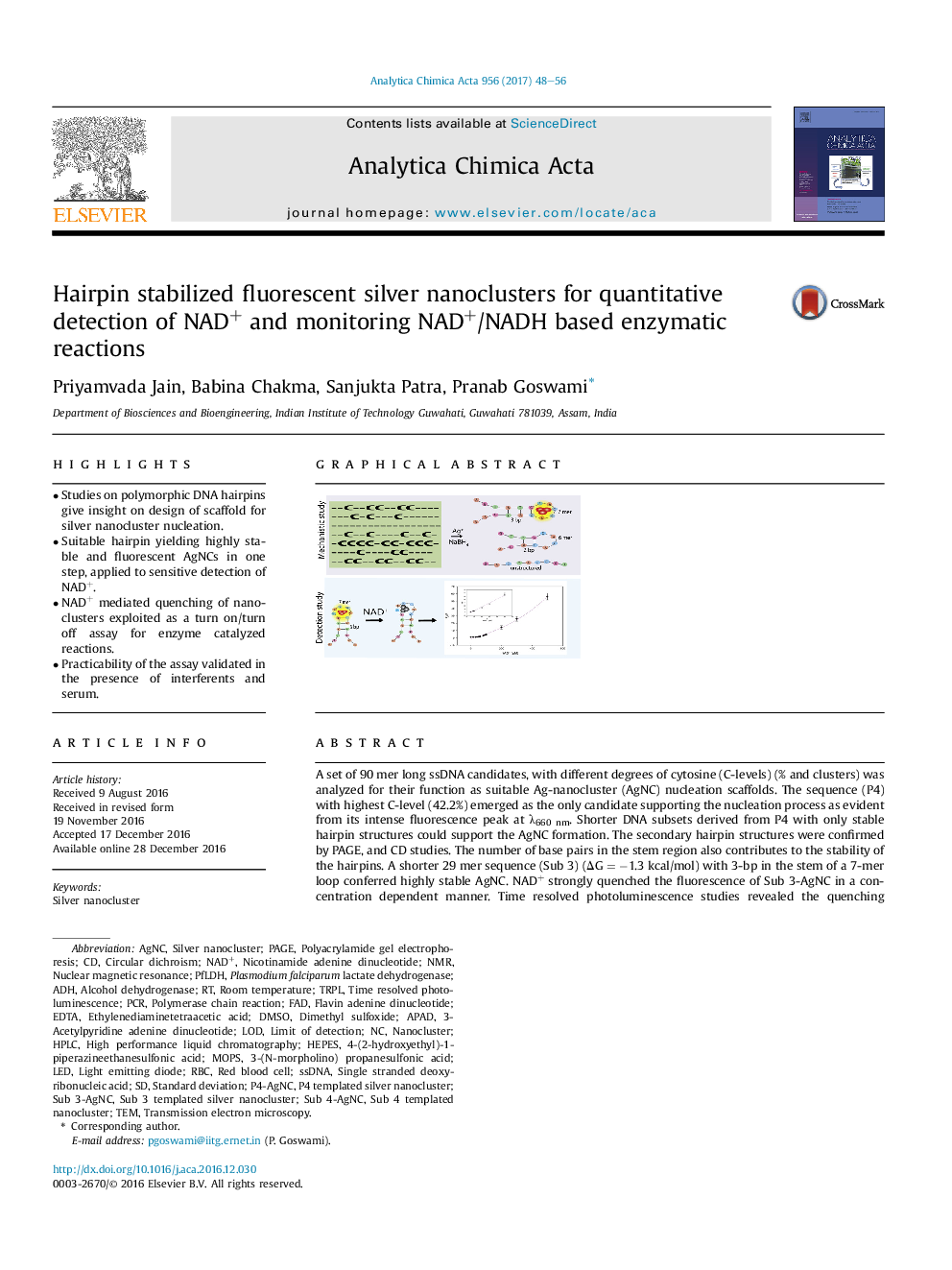| کد مقاله | کد نشریه | سال انتشار | مقاله انگلیسی | نسخه تمام متن |
|---|---|---|---|---|
| 5131273 | 1490876 | 2017 | 9 صفحه PDF | دانلود رایگان |

- Studies on polymorphic DNA hairpins give insight on design of scaffold for silver nanocluster nucleation.
- Suitable hairpin yielding highly stable and fluorescent AgNCs in one step, applied to sensitive detection of NAD+.
- NAD+ mediated quenching of nanoclusters exploited as a turn on/turn off assay for enzyme catalyzed reactions.
- Practicability of the assay validated in the presence of interferents and serum.
A set of 90 mer long ssDNA candidates, with different degrees of cytosine (C-levels) (% and clusters) was analyzed for their function as suitable Ag-nanocluster (AgNC) nucleation scaffolds. The sequence (P4) with highest C-level (42.2%) emerged as the only candidate supporting the nucleation process as evident from its intense fluorescence peak at λ660 nm. Shorter DNA subsets derived from P4 with only stable hairpin structures could support the AgNC formation. The secondary hairpin structures were confirmed by PAGE, and CD studies. The number of base pairs in the stem region also contributes to the stability of the hairpins. A shorter 29 mer sequence (Sub 3) (ÎG = â1.3 kcal/mol) with 3-bp in the stem of a 7-mer loop conferred highly stable AgNC. NAD+ strongly quenched the fluorescence of Sub 3-AgNC in a concentration dependent manner. Time resolved photoluminescence studies revealed the quenching involves a combined static and dynamic interaction where the binding constant and number of binding sites for NAD+ were 0.201 L molâ1 and 3.6, respectively. A dynamic NAD+ detection range of 50-500 μM with a limit of detection of 22.3 μM was discerned. The NAD+ mediated quenching of AgNC was not interfered by NADH, NADP+, monovalent and divalent ions, or serum samples. The method was also used to follow alcohol dehydrogenase and lactate dehydrogenase catalyzed physiological reactions in a turn-on and turn-off assay, respectively. The proposed method with ssDNA-AgNC could therefore be extended to monitor other NAD+/NADH based enzyme catalyzed reactions in a turn-on/turn-off approach.
187
Journal: Analytica Chimica Acta - Volume 956, 1 March 2017, Pages 48-56